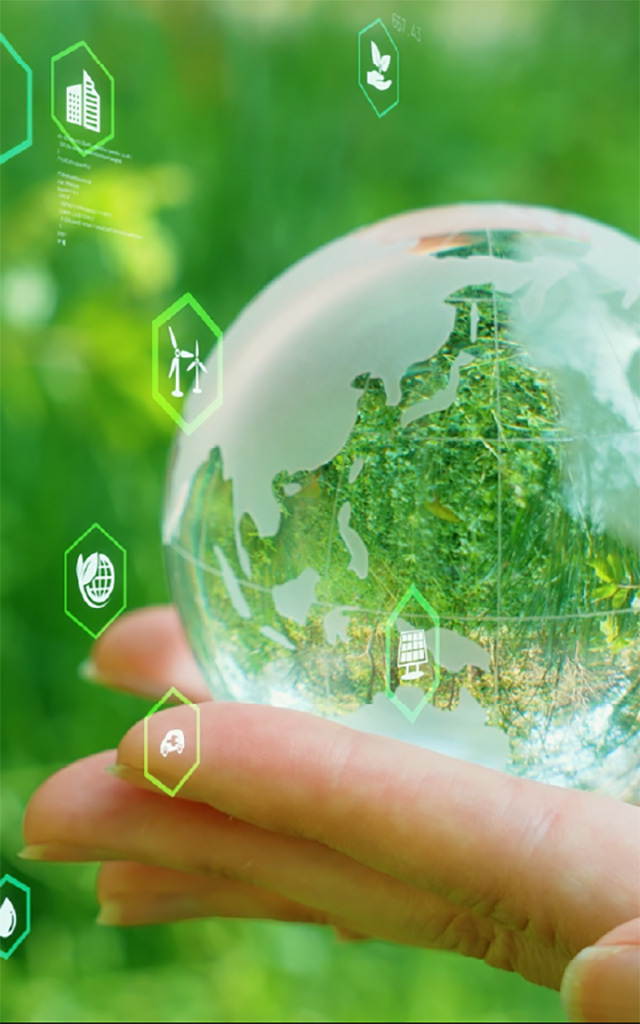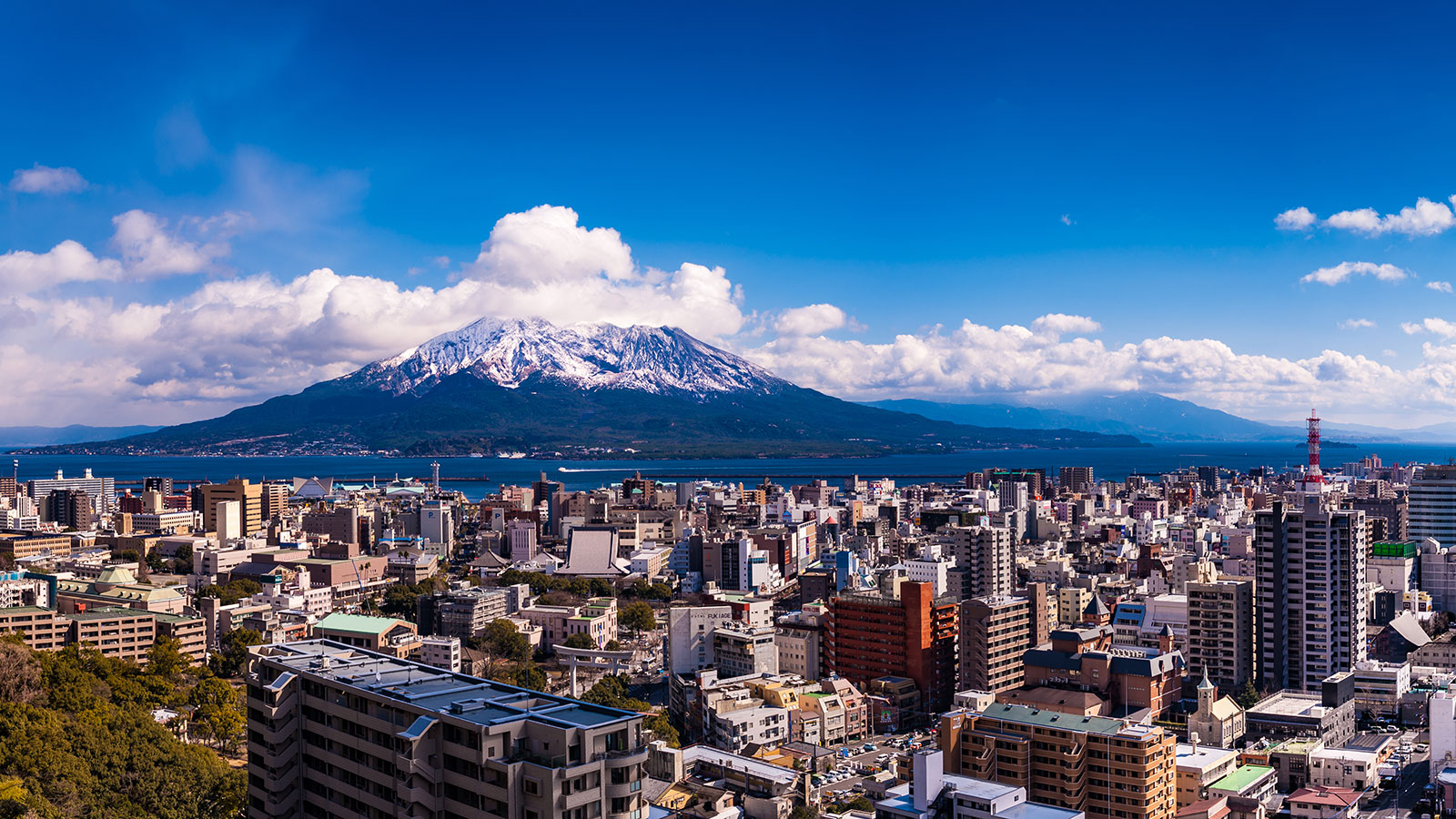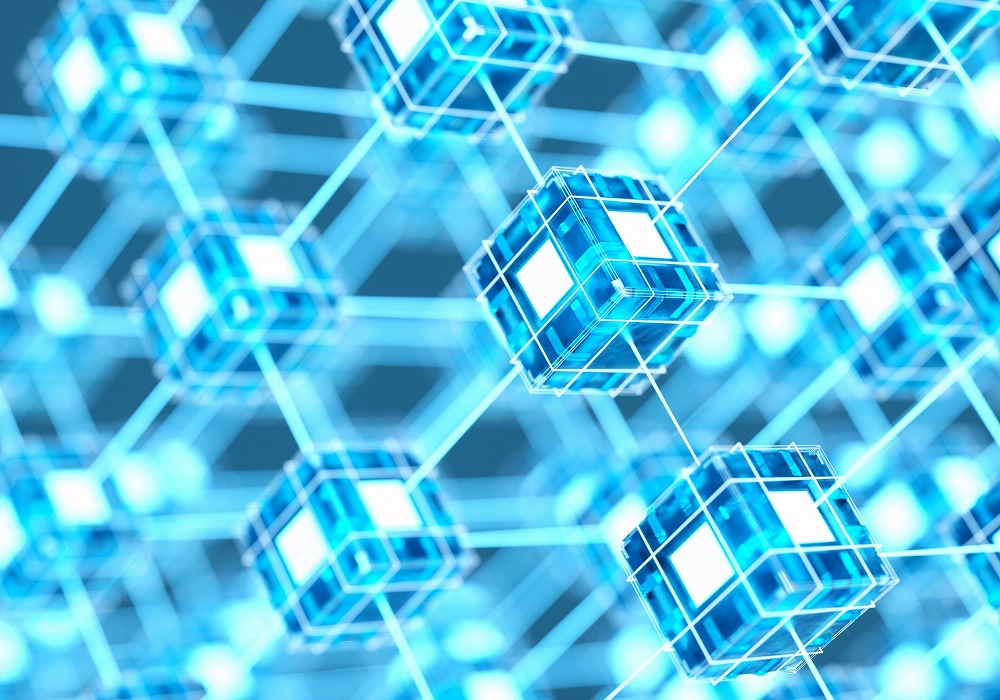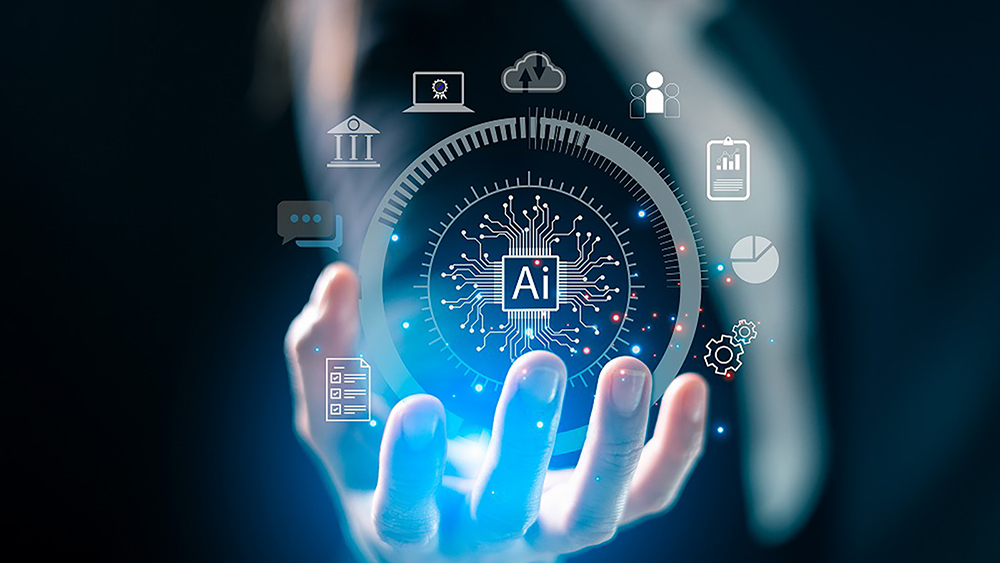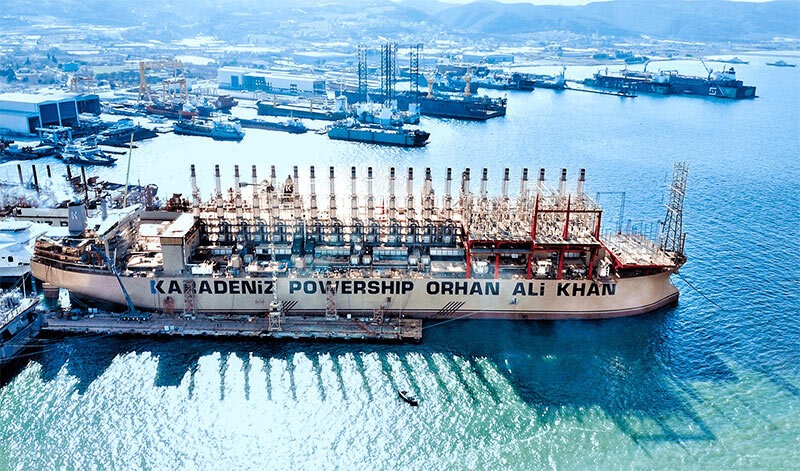- ALL
- CORPORATE
- BUSINESS
- OTHERS
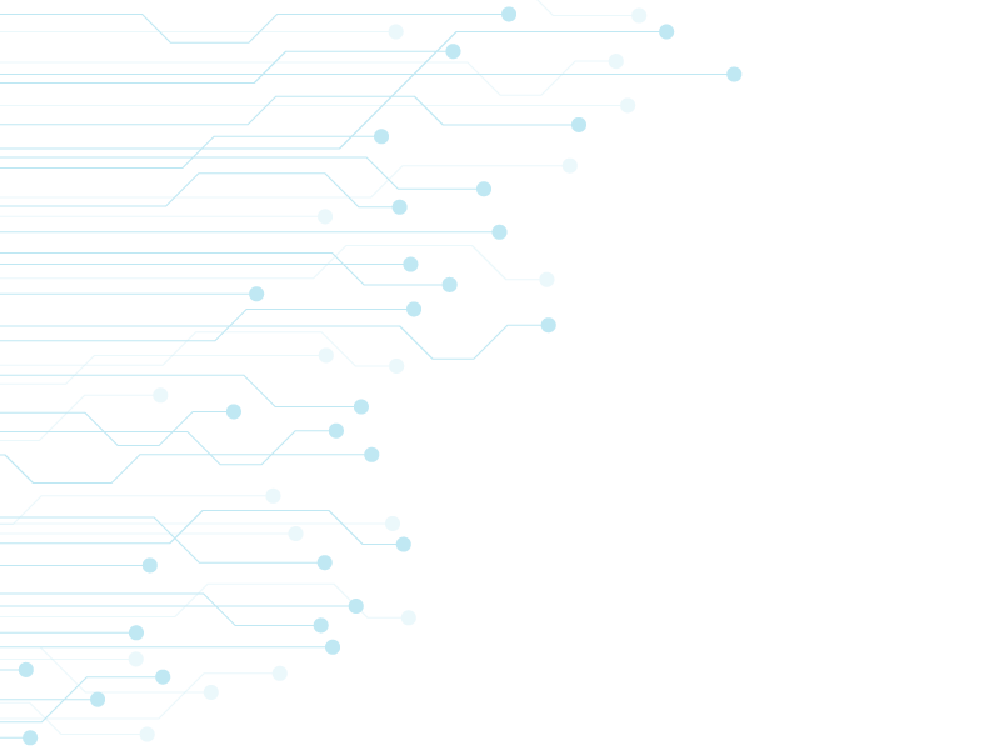
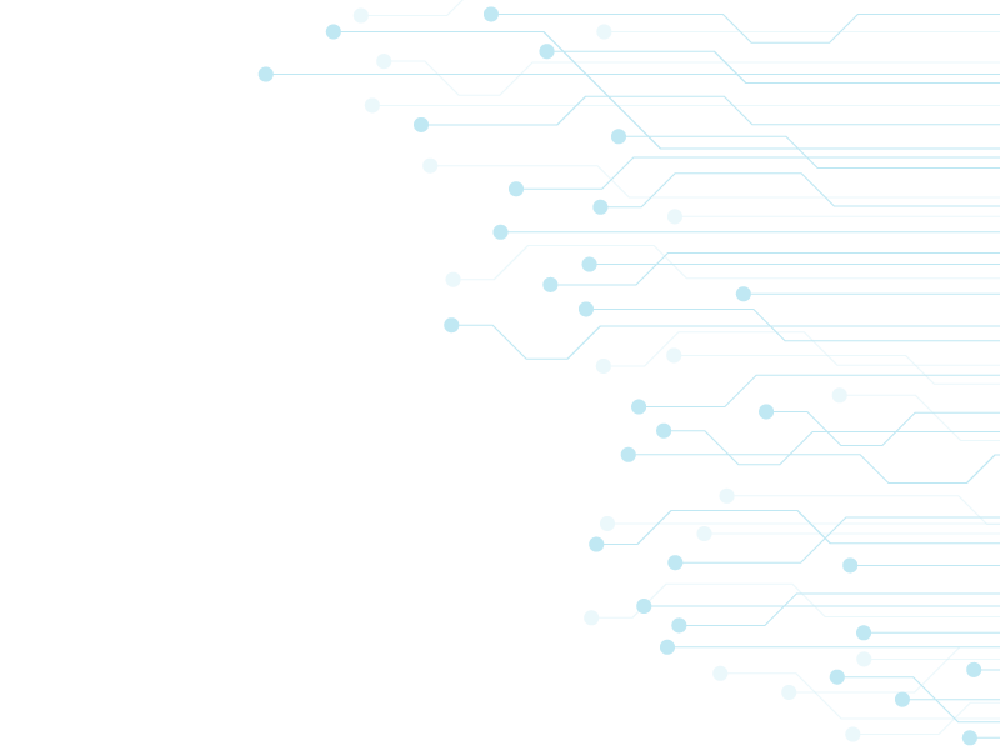
For a sustainable future for data centers and digital infrastructure
Data center investment in Japan is booming, and demand is expected to continue to grow. On the other hand, we are facing the warning about the enormous power consumption. In addition, most data centers are concentrated in Tokyo and Osaka, and it is still difficult to realize the national policy, i.e. "optimal arrangement of data centers in Japan". We Digital Infrastructure Lab are here to support a project to develop and utilize data centers and * digital infrastructure for the stakeholders auch as land owners, data center operators, developers, investors, energy operators, data center related equipment manufacturers, government, local governments.
* Not limited to data centers, it covers the fields of e-commerce logistics facilities, digital-related laboratories, base stations / communication networks, and renewable energy facilities.
To realize "ideal" digital infrastructure investment
- ALL
- TOPICS & NEWS
- Founder Message
- ESG + DC
2025.11.20
Kagoshima’s Massive Data Center Project: Pioneering the “Watt-Bit” Synergy and Strategic Nuclear Proximity
A large-scale data center project currently underway in Kagoshima Prefecture is making waves across the industry.
The proposed site is located near the Kyushu Electric Power Sendai Nuclear Power Station, a feature that promises a highly stable baseload power supply. As the sophistication of AI development and semiconductor manufacturing accelerates, securing reliable power has become the most critical challenge for data centers. Locating a facility in direct proximity to a nuclear power plant is a unique strategic differentiator—one rarely seen in recent Japanese construction projects.
Furthermore, Kagoshima offers distinct geographic advantages:
-
Geological Stability: The area is considered to have a relatively low risk of earthquakes compared to other Japanese regions.
-
Climate: Temperatures are generally more stable than on the main island (Honshu), contributing to better cooling efficiency.
With local governments actively courting digital infrastructure investment, interest from both domestic and international operators is surging.
The “Watt-Bit” Collaboration: A New Possibility
Beyond the location, this project is garnering attention as a potential pioneer for “Watt-Bit” collaboration.
“Watt-Bit” refers to the convergence of energy (Watts) and digital data (Bits). In this context, it represents an initiative to optimize data center power usage in real-time using advanced, AI-driven power management technologies. This approach is expected to deliver:
-
Significant reduction in electricity costs.
-
Better adjustment of supply-demand balance.
-
More sophisticated integration of renewable energy sources.
The Kagoshima project aims to combine a stable nuclear power source with this next-generation operational model. If successful, it could establish a new standard for data centers in Japan.
From “Consumer” to “Contributor”
There is also a broader vision to integrate this facility with regional smart grids.
By doing so, the data center could contribute to disaster resilience and promote the local consumption of locally produced energy. This marks a potential turning point where data centers evolve from facilities that simply “consume massive amounts of power” into “intelligent infrastructure that contributes to the regional grid.”
Kagoshima’s Environmental Advantage and Future Outlook
Kagoshima offers ample land availability—a critical factor for data centers requiring vast footprints. Additionally, the Kyushu region is rapidly developing into a semiconductor industry cluster (often called “Silicon Island”), suggesting strong potential for synergy with related industries.
Kagoshima is steadily increasing its presence as a “New Technology Hub in Southern Japan,” driving the broader digital industry forward.
With these compounding factors—geographic stability, power security, and technological innovation—the Kagoshima plan is more than just a construction project. It is being watched closely as a symbolic initiative that could reshape the future of Japan’s digital infrastructure. Depending on how it unfolds, it may well provide the blueprint for the next generation of national digital foundations.
2025.10.28
Oracle Boosts Data Center Investment as Hyperscalers Double Down on AI-Driven Cloud Demand
The global digital infrastructure market is rapidly expanding, fueled by the Artificial Intelligence (AI) boom and surging demand for cloud services. The Asia-Pacific region, in particular, has seen a flurry of major Data Center (DC)-related deals, with transactions totaling over 800 billion yen completed in September 2025 alone. As major US tech giants like Amazon, Google, and Meta continue to pour in investments, the importance of infrastructure supporting AI and cloud foundations is escalating.
Oracle Intensifies Offensive with $300 Billion AI Cloud Contract
Oracle’s latest move has captured significant attention across the industry. In September 2025, the US-based company signed a colossal cloud supply agreement with OpenAI, valued at approximately 44 trillion yen ($300 billion) over five years. This deal positions Oracle’s cloud infrastructure to support the massive training and inference processing demands of the generative AI developed and operated by OpenAI.
The two companies are already developing data centers with a power capacity equivalent to 4.5 gigawatts in the US, playing a part in the “Stargate Project” which also includes SoftBank Group, among others.
Responding to the explosive growth in AI demand, Oracle is aggressively accelerating its data center investments. In the quarter from June to August 2025, the company announced that its remaining performance obligations (RPO) had reached $455 billion, a 3.3-fold increase from the previous quarter, stating it had “closed multiple billion-dollar deals with three major customers.” Furthermore, a data center financing package of approximately 5.64 trillion yen, led by US banks J.P. Morgan and Mitsubishi UFJ Financial Group, is now active, paving the way for the construction of massive facilities in Wisconsin and Texas. These sites are expected to be primarily dedicated to OpenAI’s operations, forming the core of Oracle’s AI infrastructure strategy.
Expanding into Asian Markets: The New Infrastructure Race to Power the AI Society
Meanwhile, the major cloud vendors continue their aggressive expansion in the Asian market. Bain Capital sold its Chinese data center portfolio for around 588 billion yen, and Singaporean sovereign wealth fund GIC and the Abu Dhabi Investment Authority (ADIA) collectively invested over 230 billion yen into Malaysia’s Vantage Data Centers.
Across Asia, US tech leaders including Amazon and Google are investing an estimated 23 trillion yen annually in data centers. Establishing the foundational infrastructure to support AI and cloud growth has become the central focus of this competitive landscape.
Moving forward, data centers are set to transition from being mere server hubs to becoming a “new societal infrastructure supporting the AI society.” Companies prioritizing energy efficiency and the integration of renewable energy will hold the key to sustainable growth. The movements of global players like Oracle in this foundational build-out for the AI and cloud era will remain a crucial trend to watch.
2025.10.21
OpenAI Jumps into Data Center Investment—The Shifting Infrastructure Strategy of the AI Era
The explosive growth of generative AI has led to a skyrocketing demand for the computing resources necessary to develop and run AI models. Amid this surge, news that OpenAI is moving to invest in its own data centers (DCs) has captured significant attention. This move signals a change not just in AI development structure, but also a shift in the leadership of IT infrastructure itself.
This development is set against the backdrop of strategic investments by NVIDIA in OpenAI. NVIDIA, which controls the supply of GPUs, is forging closer ties with AI development companies to secure computational power as AI demand expands. By owning its own data centers, OpenAI appears to be aiming for end-to-end optimization, from model development straight through to deployment and operation.
The Shift of Power: From Hyperscale Clouds to AI Companies
Historically, the data center landscape has been dominated by hyperscale cloud vendors like Amazon (AWS), Microsoft (Azure), and Google Cloud. These companies deploy hundreds of megawatts of DC capacity globally, utilizing proprietary server designs and specialized cooling technologies. For instance, AWS is expanding its self-built facilities in Northern Virginia and Singapore, while Microsoft is growing its footprint in Ireland and Japan. Google is also continuing its expansion across Europe and the U.S.
The move by AI model developers like OpenAI to own their data centers represents a new trend. Previously dependent on the environments provided by cloud vendors, the evolution of AI models is driving a greater need for AI-specific designs that prioritize high-density computing and cooling efficiency. Going forward, it is anticipated that the specialized requirements of OpenAI, not the general specifications of the hyperscale clouds, will increasingly take precedence.
Establishing “Compute Sovereignty” as the Next Competitive Edge
Many cloud vendors adopt a “hybrid strategy”: they initially utilize leases or co-location agreements, then transition to expanding self-designed facilities as they mature. OpenAI is likely following this path, aiming to optimize availability, efficiency, and cooling performance through its own DCs. This is not merely an infrastructure investment; it is a critical step toward establishing “compute sovereignty”—a factor that will determine future AI competitiveness.
As lower-cost AI models, particularly from Chinese contenders, begin to emerge, OpenAI is aggressively strengthening its unique technological foundation. This deep commitment, extending beyond the performance of the AI model to the very infrastructure that runs it, is poised to fundamentally reshape the industry structure. With the main driver of data center investment potentially shifting from cloud providers to AI companies, the future of next-generation infrastructure is now squarely in the spotlight.
2025.09.30
Building Tomorrow’s Data Infrastructure from the Ocean
[Photo of a power barge (Source: https://karpowership.com/)]
The Potential of Offshore Data Centers Envisioned by Mitsui O.S.K. Lines and Nippon Yusen K.K.
As global digitalization accelerates and the adoption of generative AI expands, the demand for data processing is increasing year after year. However, onshore data centers face significant challenges, including power supply constraints, cooling efficiency issues, and land scarcity. Against this backdrop, initiatives to utilize the sea as a new frontier for data infrastructure are rapidly gaining attention.
Mitsui O.S.K. Lines (MOL): Offshore Data Centers in Partnership with Power Barges
Mitsui O.S.K. Lines (MOL) has signed a basic agreement with a UK-based power barge company and launched an initiative to realize “offshore data centers supplied with power from a power barge.” This system involves converting used vessels to house data centers, which are then stably supplied with electricity from the adjacent power barge. MOL aims for commercialization in 2027, planning operations on a scale of 20 to 70 MW.
A key feature of this project is its flexibility: it can be deployed without reliance on land-based power grids or designated land plots. Other attractive aspects include efficient cooling that utilizes seawater and the ability to change the deployment location based on demand, thanks to its movable, floating structure. This new model for sustainable IT infrastructure is garnering significant global attention.
Nippon Yusen K.K. (NYK) and NTT: Offshore Green DCs Aiming for 100% Renewable Energy
Meanwhile, Nippon Yusen K.K. (NYK), in collaboration with NTT Facilities, Eurus Energy, and others, has started a demonstration experiment for an “offshore floating green data center” with the city of Yokohama.
They are verifying 100% renewable energy operation by installing solar power generation equipment and storage batteries on a floating facility set up at Osanbashi Pier in Yokohama. The plan is to create a model case for a low-environmental-impact, next-generation data center, with a future view toward direct integration with offshore wind power generation.
This initiative is verifying resistance to salt damage, operational stability, and energy efficiency in a real marine environment, exploring the potential for expansion from urban ports to the open sea.
The Expanding Future of Offshore Data Centers
MOL’s “Power Barge Model” and NYK/NTT’s “Renewable Energy Model” have different approaches, but they share the common goal of realizing sustainable data centers that are independent of onshore infrastructure.
-
One approach aims for large-scale operation by leveraging power barges.
-
The other approach aims for zero emissions through renewable energy.
Both initiatives hold the potential to contribute to global digital infrastructure strategies, with a view toward future integration with international communication networks and subsea cables.
Going forward, in addition to technical verification, crucial elements will include cross-sector collaboration—spanning telecommunications, power, and shipping—as well as regulatory development. These ventures into the new domain of offshore data centers are poised to attract worldwide focus as a Japanese-born model for the data center industry.
2024.08.23
The government is hoping to decarbonize domestic data centers through industrial clustering and subsidies.
With the rapid spread of artificial intelligence (AI), the importance of data centers is increasing. Currently, there is a potential shortage of data centers to support generative AI and the AI of the next few years, and there are challenges such as how to secure the large amounts of electricity consumed by data centers. While companies are making efforts to meet demand by using renewable energy and reducing carbon dioxide emissions, domestic companies tend to be less aware of this issue.
GAFAM companies have been building their own renewable energy power plants.
Companies like Amazon, known as GAFAM, have already entered into long-term contracts with power generators to directly procure renewable energy. They secure renewable energy generation facilities near electricity-consuming facilities such as data centers and use renewable energy in a “local production for local consumption” manner.
Google has announced that it has procured more than 50 renewable energy sources with a total capacity of 5.5 GW. Microsoft has announced contracts for 5.8 GW of renewable energy sources in 10 countries worldwide.
Government considers subsidy system
Meanwhile, the government has announced that it will promote industrial clustering in regions with abundant decarbonized electricity such as renewable energy and nuclear power. A system is being considered to review investment plans by companies and local governments when constructing factories and data centers, and to make projects with a high degree of decarbonization eligible for corporate tax breaks and subsidies.
The Green Transformation (GX) Promotion Act, which sets out the government’s decarbonization strategy, will be amended. Companies will be required to formulate plans specifying the proportion of decarbonized electricity used for facility development.
By making applications with municipalities that meet a certain level of decarbonized electricity for use within the region a condition, the government aims to shift to a corporate location policy focused on reducing environmental impact.
After certification, companies will be eligible for measures such as corporate tax reductions and subsidies for capital investment.
Expectations for a change in corporate awareness towards decarbonization
There is a bias in the regions where decarbonized electricity can be supplied domestically. Regions with a high proportion of decarbonized power sources, exceeding 40%, are limited to Hokkaido, Kansai, and Kyushu in Japan, where power generation facilities such as solar and wind power are widely located. Suitable locations for offshore wind power, which is subject to wind direction, are limited to the offshore areas of Hokkaido, Aomori Prefecture, Akita Prefecture, and Nagasaki Prefecture.
If electricity is transported far from the power plant, transmission losses occur. Transmission network equipment also incurs costs, making the use of electricity from remote locations expensive. Industrial clustering promotes local production for local consumption of electricity and leads to efficient use of energy.
In recent years, there has been active construction of semiconductor-related factories and new data centers in Japan. While electricity consumption is expected to increase, the government aims to achieve net zero emissions of greenhouse gases such as CO2 by 2050.
It is expected that subsidies will encourage companies to become more aware of decarbonization, but it remains to be seen how this will actually play out. We would like to introduce the future situation as well.
2023.07.05
Google warns Irish government moratorium on data center development
Irish government restricts data center development
Ireland’s The Commission for Regulation of Utilities (CRU) has decided to limit the impact by imposing a de facto moratorium on new data center development in the Dublin metropolitan area.
Ireland’s national transmission operator EirGrid said in response that it would only consider new applications for grid connection on a case-by-case basis. The restrictions could reportedly last until 2028.
Martin Shanahan, CEO of Ireland’s Industrial Development Authority (IDA), recently said that new data centers “are unlikely to occur in Dublin and the East Coast at this time.”
Google has asked such Irish regulators not to impose a moratorium on data center development in the country.
In The Commission for Regulation of Utilities (CRU) filing, the company said search and cloud companies must “absolutely” avoid a moratorium on data center development.
Google said such a ban would send a “wrong signal” about Ireland’s digital economy ambitions, and would affect the country’s infrastructure, according to a Freedom of Information request first reported by The Irish Times. It adds that it makes further investment “impossible”.
In the filing, Google called for more transparency about where the Irish network has existing power capacity, as well as being clearer and more open about EirGrid’s projections of data center power usage growth. I think you need to.
Growing Demand for Cloud Computing, Google’s Proposal
Google, which launched its first data center in Ireland in 2012, has proposed a new pricing structure for data center operators who reserve more capacity than they ultimately need or grow to that capacity too slowly. bottom.
“Transmission tariffs can be designed so that consumers who are not seeing increased demand towards maximum reserved capacity will be charged more than consumers who are demonstrating an increase each year.” says.
EirGrid and politicians have previously suggested moving data center development to the west of Ireland (away from Dublin’s constrained areas and closer to renewable energy sources), but Google says this is not a viable solution. I point out that it is not.
“The demand for cloud computing in Dublin is growing. We are unable to provide services.”
Another AWS filing says Ireland has missed opportunities in the past to address supply issues.
“Over the past decade, we have had opportunities to do reinforcement work, prepare the grid for growth and investment, and prepare the grid for more intermittent integration of resources,” he said.
Both the Social Democrats and the People Before Profit parties have been calling for a nationwide moratorium on future data center projects for the past 12 months. The PBP bill was an absolute ban on data centers, liquid natural gas plants and new fossil fuel infrastructure.
In Dublin last month, South Dublin County Council (SDCC) voted to block future data center construction in the county as part of a new development plan.
What is the background behind the Irish government’s moratorium on data center development?
Irish Government Behind Data Center Development Moratorium
The Irish government’s achievement of emissions and renewable energy targets is behind this.
According to EirGrid, data center energy usage is projected to increase by 9TWh by 2030, ranging from 23% to 31% of Ireland’s grid supply in 2030. This comes at a time when the government wants to reduce emissions by 60-80% by increasing the share of renewable energy. At the same time, governments want to decarbonise by moving heating and transportation to electricity, further increasing demand on the grid.
According to The Irish Times, EirGrid has agreed to connect an additional 1.8GW of data centers to the grid, with current peak demand of around 5GW, and a further 2GW of applications ready. That’s it.
The Government Statement on the Role of Data Centers in Ireland’s Enterprise Strategy 2018, published in 2018, emphasized the positive role of data centers in the country’s economic performance. However, it will now be “aligned with sectoral emissions caps and renewable energy targets, concerns about continued security of supply, and demand flexibility measures currently needed. In order to secure it, it will be reviewed. “In addition, further tightening of regulations will be considered,” it is reported.
Will it work or will it backfire?
The Irish government imposes a moratorium on data center development, which is in high demand worldwide. It seems that the moratorium continues while receiving a warning from Google. Will this decision work or will it backfire? We will keep an eye on trends.
2023.03.26
Data center facility inspection robots to be fully deployed from April 2023 (NTT DATA)
NTT DATA Co., Ltd. is working to remote/automate equipment inspection work using robots at the data center “NTT Shinagawa TWINS DATA Building” (hereinafter referred to as “Shinagawa Data Center”) operated by the company. announced that it has confirmed that it is possible to reduce the equipment inspection work that was previously done by about 50%.
From April 2023, NTT DATA will proceed with the introduction of robots to data centers nationwide.
Background of robot introduction
NTT DATA explained that the building management industry, including data centers, is facing a serious manpower shortage, and that facility management work, in particular, is facing a shortage of skilled workers, and that there is a need for labor savings and more efficient work implementation.
Among facility management operations, the company believes that inspection work is highly effective in reducing manpower and that remote/automated operations are feasible through the use of digital technology, and has been conducting verification for practical application at its Shinagawa Data Center.
Overview of Robot Introduction and Changing Checking Tasks
In this initiative, a robot automatically patrols a predetermined inspection route, taking pictures of meters, lamps, and facility exterior, and acquiring environmental data such as odors using sensors, thereby replacing the work of measuring meters, checking lamps, and checking for abnormalities in appearance and unusual odors that had previously been performed by humans.
In this method, a single camera or sensor can be used to inspect multiple locations, and there is no need to modify the current equipment in operation, making it cheaper and simpler to achieve remote/automated operation than other methods such as installing IoT cameras and sensors for each inspection target or converting to smart meters.
The robot used in this project is a next-generation avatar robot “ugo Pro” modified for facility inspection work in collaboration with ugo Corporation, a manufacturer of business DX robots.
In order to capture detailed meter readings, the robot is equipped with a 4K camera with higher image quality than the standard model, and multiple devices such as an odor sensor, microphone, and thermo camera can be mounted on the ugo itself to expand its applications depending on the inspection items.
The robot can be operated using only a PC, and its travel route can be set with no code, making it easy for on-site personnel to use the robot. The robot can switch between automatic traveling and remote control, and can be used not only for automatic inspection work, but also for multiple applications, such as work support from a distance.
These features not only allow the robot to handle a variety of inspection items, but also to expand its applications to include remote work support and construction attendance.
By using robots and sensors to remotely/automatically perform inspection work, not only can work hours be reduced, but also the threshold values for determining abnormalities, which used to rely on human senses, can be quantified to enable detection of abnormalities without relying on skilled workers.
In addition, by making it possible to remotely perform tasks that could only be performed onsite, including work support and construction attendance, it is expected to support flexible work styles and secure new workers.
About the future
In the future, NTT DATA aims to expand the scope of automation to include recording and reporting work that currently requires personnel to perform, and to reduce the time required for inspection work by up to 80% by promoting linkage with meter reading systems and abnormality detection AI.
NTT Data will also work to enhance facility management operations, such as advanced abnormality detection and predictive maintenance of facilities, utilizing data acquired by robots and sensors.
Starting in April 2023, the initiative will be rolled out sequentially to 15 data centers nationwide.
Furthermore, based on the knowledge gained from these efforts, the company aims to offer the service commercially as a remote/automated service for facility inspection operations by the end of FY2023.
For commercial provision, ugo will utilize the new robot “ugo mini” developed by making use of the knowledge obtained through joint verification with NTT DATA to develop remote/automation solutions for facility management operations, from consulting for introduction. NTT DATA provide one-stop support from system construction to operation to solve customer problems.
The day of full-scale deployment of robots for facility inspection operations at data centers is eagerly awaited to help resolve the serious labor shortage.
2023.03.11
Announced the start of construction of “Zero Emission Data Center” planned in Ishikari City, Hokkaido (KCCS)
On November 24, 2022, Kyocera Communication Systems Corporation (KCCS) announced that KCCS will begin construction of a zero-emission data center in Ishikari City, Hokkaido, Japan, in December 2022, with the data center scheduled to open in the fall of 2024.
In 2019, KCCS announced plans for a zero-emission data center in Ishikari, Hokkaido, which will operate on 100% renewable energy.
Subsequently, due to a change in the originally planned baseload power supply plan, the power supply configuration and data center design were revised, and now the company has announced the start of construction and opening schedule.
The data center to be constructed will be located in the Ishikari Bay New Port area of Ishikari City, Hokkaido, with a site area of approximately 15,000 square meters, total floor space of approximately 5,300 square meters (at the time of opening), and 400 racks (at the time of opening).
Toward Achieving Carbon Neutrality by 2050
In Japan, local production and local consumption of renewable energy is an important theme for achieving carbon neutrality (virtually zero greenhouse gas emissions) by 2050, as is the decentralization of data centers in the “Digital Rural City State Concept” being promoted by the government. The introduction of “real renewable energy,” which reduces environmental impact to plus or minus zero through the purchase of environmental values such as non-fossil certificates, is progressing.
To this end, expansion of “direct use of renewable energy” is also needed to further increase the amount of renewable energy introduced.
However, it is not easy to achieve “direct use of renewable energy” in large-scale demand facilities such as data centers, as securing stable renewable energy power and economic efficiency is a challenge.
Ishikari City has been selected as a “Decarbonization Leading Region (1st round)” by the Ministry of the Environment in a publicly solicited project to achieve carbon neutrality by 2050.
In addition, KCCS has formulated the “Redesigning the Region through Local Production of Renewable Energy and Decarbonization,” a measure aimed at zero carbon, and is aiming for a decarbonized industrial cluster by supplying renewable energy to the data center cluster and surrounding facilities in the Ishikari Bay New Port area.
The zero-emission data center will utilize the abundant renewable energy sources in the region, and a new solar power plant owned by KCCS will be built in the vicinity of the data center to directly utilize those renewable energy sources.
In addition, in order to operate the data center while simultaneously ensuring the “reliability,” “environmental friendliness,” and “economic efficiency” of multiple renewable energy sources, KCCS will build its own power supply and demand control mechanism utilizing storage batteries and AI technology.
KCCS aims to demonstrate the possibility of local production for local consumption of renewable energy through the “data center business operated on 100% renewable energy” in Ishikari City, as well as to contribute to regional revitalization through decentralized data storage in Japan and the creation of jobs for data center technicians and energy-related engineers. The project also aims to contribute to regional revitalization by creating jobs for data center technicians and energy-related engineers.
Expectations are high for the opening of a “zero-emission data center” to achieve carbon neutrality by 2050.
2022.09.05
2022.09.05
2022.09.05
2022.09.05
2025.11.20
Kagoshima’s Massive Data Center Project: Pioneering the “Watt-Bit” Synergy and Strategic Nuclear Proximity
A large-scale data center project currently underway in Kagoshima Prefecture is making waves across the industry.
The proposed site is located near the Kyushu Electric Power Sendai Nuclear Power Station, a feature that promises a highly stable baseload power supply. As the sophistication of AI development and semiconductor manufacturing accelerates, securing reliable power has become the most critical challenge for data centers. Locating a facility in direct proximity to a nuclear power plant is a unique strategic differentiator—one rarely seen in recent Japanese construction projects.
Furthermore, Kagoshima offers distinct geographic advantages:
-
Geological Stability: The area is considered to have a relatively low risk of earthquakes compared to other Japanese regions.
-
Climate: Temperatures are generally more stable than on the main island (Honshu), contributing to better cooling efficiency.
With local governments actively courting digital infrastructure investment, interest from both domestic and international operators is surging.
The “Watt-Bit” Collaboration: A New Possibility
Beyond the location, this project is garnering attention as a potential pioneer for “Watt-Bit” collaboration.
“Watt-Bit” refers to the convergence of energy (Watts) and digital data (Bits). In this context, it represents an initiative to optimize data center power usage in real-time using advanced, AI-driven power management technologies. This approach is expected to deliver:
-
Significant reduction in electricity costs.
-
Better adjustment of supply-demand balance.
-
More sophisticated integration of renewable energy sources.
The Kagoshima project aims to combine a stable nuclear power source with this next-generation operational model. If successful, it could establish a new standard for data centers in Japan.
From “Consumer” to “Contributor”
There is also a broader vision to integrate this facility with regional smart grids.
By doing so, the data center could contribute to disaster resilience and promote the local consumption of locally produced energy. This marks a potential turning point where data centers evolve from facilities that simply “consume massive amounts of power” into “intelligent infrastructure that contributes to the regional grid.”
Kagoshima’s Environmental Advantage and Future Outlook
Kagoshima offers ample land availability—a critical factor for data centers requiring vast footprints. Additionally, the Kyushu region is rapidly developing into a semiconductor industry cluster (often called “Silicon Island”), suggesting strong potential for synergy with related industries.
Kagoshima is steadily increasing its presence as a “New Technology Hub in Southern Japan,” driving the broader digital industry forward.
With these compounding factors—geographic stability, power security, and technological innovation—the Kagoshima plan is more than just a construction project. It is being watched closely as a symbolic initiative that could reshape the future of Japan’s digital infrastructure. Depending on how it unfolds, it may well provide the blueprint for the next generation of national digital foundations.
2025.10.28
Oracle Boosts Data Center Investment as Hyperscalers Double Down on AI-Driven Cloud Demand
The global digital infrastructure market is rapidly expanding, fueled by the Artificial Intelligence (AI) boom and surging demand for cloud services. The Asia-Pacific region, in particular, has seen a flurry of major Data Center (DC)-related deals, with transactions totaling over 800 billion yen completed in September 2025 alone. As major US tech giants like Amazon, Google, and Meta continue to pour in investments, the importance of infrastructure supporting AI and cloud foundations is escalating.
Oracle Intensifies Offensive with $300 Billion AI Cloud Contract
Oracle’s latest move has captured significant attention across the industry. In September 2025, the US-based company signed a colossal cloud supply agreement with OpenAI, valued at approximately 44 trillion yen ($300 billion) over five years. This deal positions Oracle’s cloud infrastructure to support the massive training and inference processing demands of the generative AI developed and operated by OpenAI.
The two companies are already developing data centers with a power capacity equivalent to 4.5 gigawatts in the US, playing a part in the “Stargate Project” which also includes SoftBank Group, among others.
Responding to the explosive growth in AI demand, Oracle is aggressively accelerating its data center investments. In the quarter from June to August 2025, the company announced that its remaining performance obligations (RPO) had reached $455 billion, a 3.3-fold increase from the previous quarter, stating it had “closed multiple billion-dollar deals with three major customers.” Furthermore, a data center financing package of approximately 5.64 trillion yen, led by US banks J.P. Morgan and Mitsubishi UFJ Financial Group, is now active, paving the way for the construction of massive facilities in Wisconsin and Texas. These sites are expected to be primarily dedicated to OpenAI’s operations, forming the core of Oracle’s AI infrastructure strategy.
Expanding into Asian Markets: The New Infrastructure Race to Power the AI Society
Meanwhile, the major cloud vendors continue their aggressive expansion in the Asian market. Bain Capital sold its Chinese data center portfolio for around 588 billion yen, and Singaporean sovereign wealth fund GIC and the Abu Dhabi Investment Authority (ADIA) collectively invested over 230 billion yen into Malaysia’s Vantage Data Centers.
Across Asia, US tech leaders including Amazon and Google are investing an estimated 23 trillion yen annually in data centers. Establishing the foundational infrastructure to support AI and cloud growth has become the central focus of this competitive landscape.
Moving forward, data centers are set to transition from being mere server hubs to becoming a “new societal infrastructure supporting the AI society.” Companies prioritizing energy efficiency and the integration of renewable energy will hold the key to sustainable growth. The movements of global players like Oracle in this foundational build-out for the AI and cloud era will remain a crucial trend to watch.
2025.10.21
OpenAI Jumps into Data Center Investment—The Shifting Infrastructure Strategy of the AI Era
The explosive growth of generative AI has led to a skyrocketing demand for the computing resources necessary to develop and run AI models. Amid this surge, news that OpenAI is moving to invest in its own data centers (DCs) has captured significant attention. This move signals a change not just in AI development structure, but also a shift in the leadership of IT infrastructure itself.
This development is set against the backdrop of strategic investments by NVIDIA in OpenAI. NVIDIA, which controls the supply of GPUs, is forging closer ties with AI development companies to secure computational power as AI demand expands. By owning its own data centers, OpenAI appears to be aiming for end-to-end optimization, from model development straight through to deployment and operation.
The Shift of Power: From Hyperscale Clouds to AI Companies
Historically, the data center landscape has been dominated by hyperscale cloud vendors like Amazon (AWS), Microsoft (Azure), and Google Cloud. These companies deploy hundreds of megawatts of DC capacity globally, utilizing proprietary server designs and specialized cooling technologies. For instance, AWS is expanding its self-built facilities in Northern Virginia and Singapore, while Microsoft is growing its footprint in Ireland and Japan. Google is also continuing its expansion across Europe and the U.S.
The move by AI model developers like OpenAI to own their data centers represents a new trend. Previously dependent on the environments provided by cloud vendors, the evolution of AI models is driving a greater need for AI-specific designs that prioritize high-density computing and cooling efficiency. Going forward, it is anticipated that the specialized requirements of OpenAI, not the general specifications of the hyperscale clouds, will increasingly take precedence.
Establishing “Compute Sovereignty” as the Next Competitive Edge
Many cloud vendors adopt a “hybrid strategy”: they initially utilize leases or co-location agreements, then transition to expanding self-designed facilities as they mature. OpenAI is likely following this path, aiming to optimize availability, efficiency, and cooling performance through its own DCs. This is not merely an infrastructure investment; it is a critical step toward establishing “compute sovereignty”—a factor that will determine future AI competitiveness.
As lower-cost AI models, particularly from Chinese contenders, begin to emerge, OpenAI is aggressively strengthening its unique technological foundation. This deep commitment, extending beyond the performance of the AI model to the very infrastructure that runs it, is poised to fundamentally reshape the industry structure. With the main driver of data center investment potentially shifting from cloud providers to AI companies, the future of next-generation infrastructure is now squarely in the spotlight.
2025.09.30
Building Tomorrow’s Data Infrastructure from the Ocean
[Photo of a power barge (Source: https://karpowership.com/)]
The Potential of Offshore Data Centers Envisioned by Mitsui O.S.K. Lines and Nippon Yusen K.K.
As global digitalization accelerates and the adoption of generative AI expands, the demand for data processing is increasing year after year. However, onshore data centers face significant challenges, including power supply constraints, cooling efficiency issues, and land scarcity. Against this backdrop, initiatives to utilize the sea as a new frontier for data infrastructure are rapidly gaining attention.
Mitsui O.S.K. Lines (MOL): Offshore Data Centers in Partnership with Power Barges
Mitsui O.S.K. Lines (MOL) has signed a basic agreement with a UK-based power barge company and launched an initiative to realize “offshore data centers supplied with power from a power barge.” This system involves converting used vessels to house data centers, which are then stably supplied with electricity from the adjacent power barge. MOL aims for commercialization in 2027, planning operations on a scale of 20 to 70 MW.
A key feature of this project is its flexibility: it can be deployed without reliance on land-based power grids or designated land plots. Other attractive aspects include efficient cooling that utilizes seawater and the ability to change the deployment location based on demand, thanks to its movable, floating structure. This new model for sustainable IT infrastructure is garnering significant global attention.
Nippon Yusen K.K. (NYK) and NTT: Offshore Green DCs Aiming for 100% Renewable Energy
Meanwhile, Nippon Yusen K.K. (NYK), in collaboration with NTT Facilities, Eurus Energy, and others, has started a demonstration experiment for an “offshore floating green data center” with the city of Yokohama.
They are verifying 100% renewable energy operation by installing solar power generation equipment and storage batteries on a floating facility set up at Osanbashi Pier in Yokohama. The plan is to create a model case for a low-environmental-impact, next-generation data center, with a future view toward direct integration with offshore wind power generation.
This initiative is verifying resistance to salt damage, operational stability, and energy efficiency in a real marine environment, exploring the potential for expansion from urban ports to the open sea.
The Expanding Future of Offshore Data Centers
MOL’s “Power Barge Model” and NYK/NTT’s “Renewable Energy Model” have different approaches, but they share the common goal of realizing sustainable data centers that are independent of onshore infrastructure.
-
One approach aims for large-scale operation by leveraging power barges.
-
The other approach aims for zero emissions through renewable energy.
Both initiatives hold the potential to contribute to global digital infrastructure strategies, with a view toward future integration with international communication networks and subsea cables.
Going forward, in addition to technical verification, crucial elements will include cross-sector collaboration—spanning telecommunications, power, and shipping—as well as regulatory development. These ventures into the new domain of offshore data centers are poised to attract worldwide focus as a Japanese-born model for the data center industry.



 JA
JA